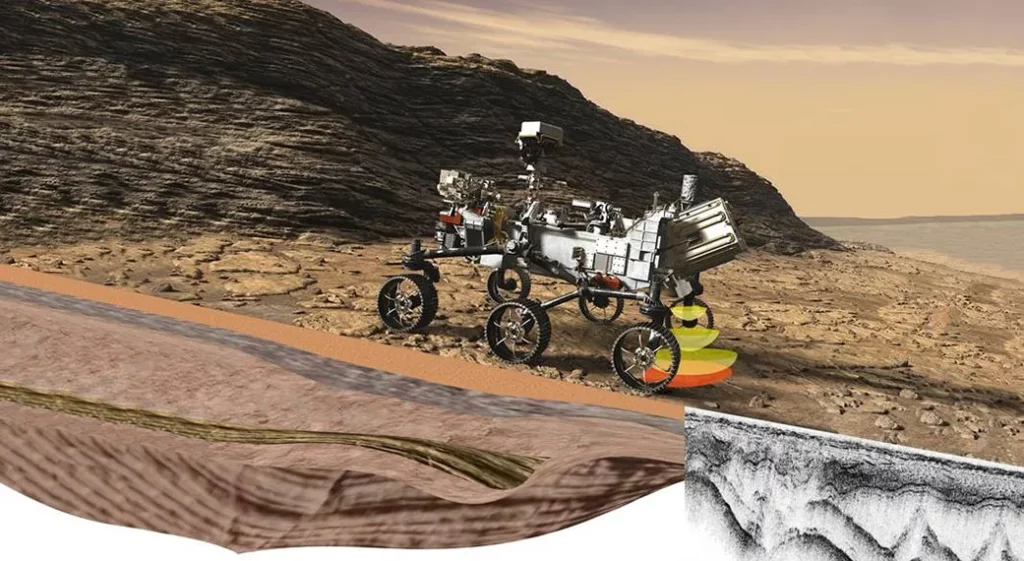
In February 2021, NASA’s Perseverance Rover landed on Mars. On Mars, the main objective is astrobiology, which includes the search of ancient microbial life. The rover is characterizing the planet’s geology and past climate, and is the first rover to collect martian rock. Now, NASA is celebrating the rovers 1,000 days on the planet.
The Perseverance Rover recently completed its exploration of the ancient river delta, that holds evidence of a lake that filed Jezero Crater billions of years ago. As of today, the rover has collected a total of 23 samples, revealing the history of this region on Mars.
One sample is called “Lefroy Bay“, which contains a large quantity of fine-grained silica, a material know to preserve fossils on Earth. Another sample called “Otis Peak” has a significant amount of phosphate, which is associated with life. Both samples are also rich in carbonate, which can preserve a record of environmental conditions from when the rock was formed. These discoveries were also shared on Tuesday, December 12th at the American Geophysical Union meeting in San Francisco.
“We picked Jezero Crater as a landing site because orbital imagery showed a delta – clear evidence that a large lake once filled the crater. A lake is a potentially habitable environment, and delta rocks are a great environment for entombing signs of ancient life as fossils in the geologic record. After thorough exploration, we’ve pieced together the crater’s geologic history, charting its lake and river phase from beginning to end.”
Ken Farley of Caltech (Perseverance’s project scientist)
Jezero formed from an asteroid impact on the planet, almost 4 billion years ago. When the rover landed in 2021, NASA discovered the crater floor is made of igneous rock. The rock is formed from magma underground, or volcanic activity at the surface. Since then, they have found sandstone and mudstone, where a river could have been millions of years ago.
While all of this is great, the Perseverance Rover mission isn’t done yet. The ongoing mission will explore Jezero Crater’s margin, near the canyon entrance where a river once flooded the crater floor.
Image Source: Credits: NASA/JPL-Caltech/FFI